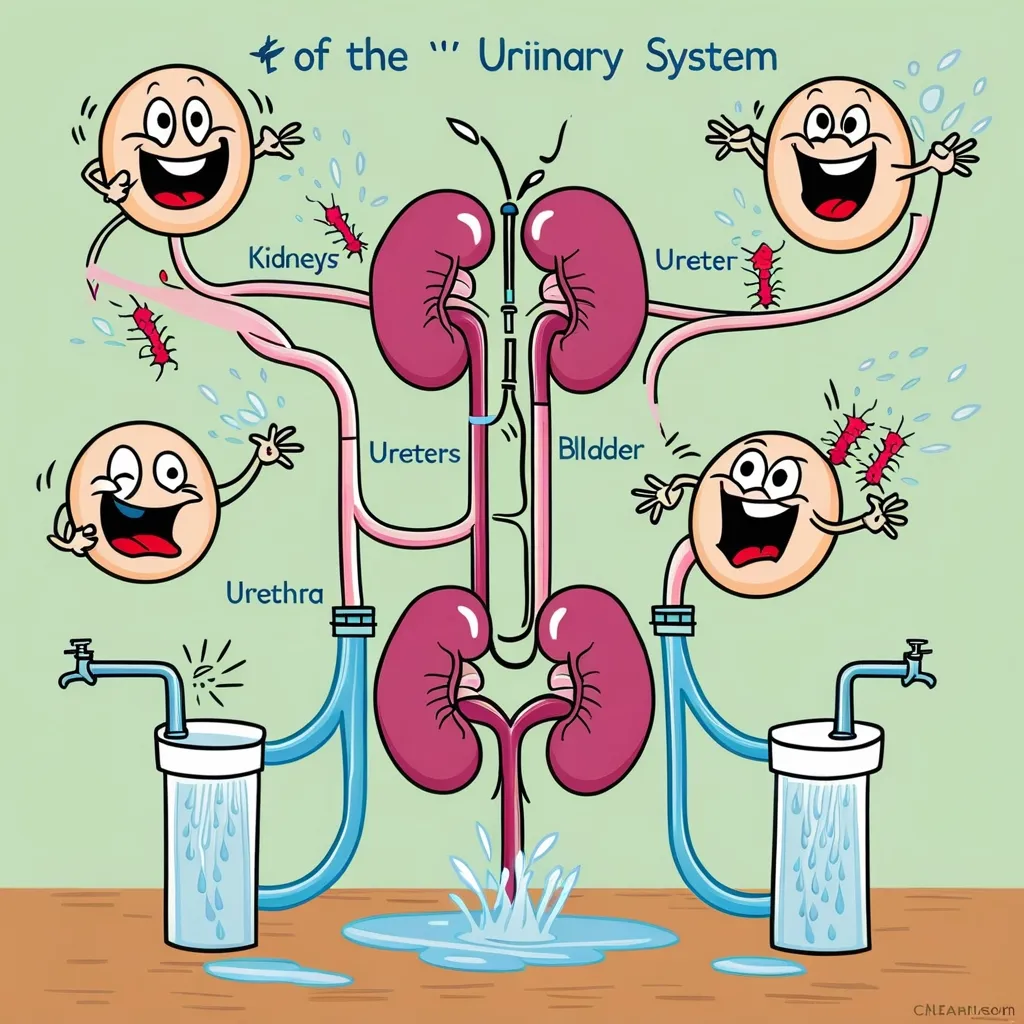Urinary tract infections, or UTIs, are something that millions of people deal with every year. These pesky infections happen when bacteria, mainly from our digestive tract, find their way into the urinary system and start causing trouble. Let’s take a closer look at what UTIs are all about, the symptoms to watch out for, how to treat them, and some handy tips to prevent them.
Getting to Know UTIs
UTIs can pop up anywhere in your urinary system, which is pretty extensive. It includes the kidneys, ureters, bladder, and urethra. Here’s a quick breakdown of what each part does. The kidneys do the heavy lifting by filtering blood to get rid of waste, turning it into urine. The ureters are like tiny highways that carry urine from the kidneys to the bladder, where it waits until we need to go. Lastly, the urethra is the final stretch, the tube that lets urine exit the body.
Symptoms: Spotting the Culprits
Symptoms of a UTI can be a bit of a mixed bag and really depend on which part of the urinary system is under attack.
If the bladder is involved, called cystitis, prepare for a frequent and sometimes urgent need to pee, even if not much comes out. Expect pain or a burning sensation when urinating, plus your urine could look cloudy, dark, or even bloody. Lower belly pain and a general feeling of weariness or shakiness might also crash the party.
Should the infection move on up to the kidneys, known as pyelonephritis, brace yourself for a rougher ride. Fever, chills, nausea, vomiting, and pain in your upper back or side are common signs. Sometimes, older adults might show mental confusion instead of typical symptoms.
For guys, a UTI might bring pain in the penis or rectum, while kids and older adults might end up with bedwetting or a stronger need to pee.
What Causes UTIs?
Most of the time, UTIs are a bacterial affair, with E. coli being the main troublemaker. These bacteria usually hang out in the colon but can sneak their way into the urinary tract via the urethra. Women are more likely to get UTIs, thanks to their shorter urethra, which gives bacteria an easier trip to the bladder or kidneys.
Other factors that ramp up UTI risks include sexual activity, pregnancy, conditions like kidney stones that block the urinary tract, and using urinary catheters. Let’s not forget the role of poor hygiene and not staying hydrated enough.
Taming the Beast: Treating UTIs
Antibiotics are the go-to for knocking out UTIs. Which antibiotic and how long you’ll need to take it really depends on how severe the infection is and the type of bacteria that’s involved. For simpler, straightforward UTIs, common antibiotics like amoxicillin, doxycycline, and trimethoprim-sulfamethoxazole usually do the trick. They often start working within 3 to 6 weeks. It’s super important to finish the whole course, even if you start feeling better.
In more serious cases, like a kidney infection, a trip to the hospital might be in order for intravenous antibiotics and fluid treatment. Pain relief meds can also help manage the discomfort.
Play Defense: Preventing UTIs
Preventing UTIs can be pretty straightforward if you stick to a few good habits:
Drink lots of water. Staying well-hydrated helps dilute your urine and rinse out bacteria from your urinary tract. Keep up good hygiene. For the ladies, wiping from front to back after using the bathroom is key to keeping bacteria from the anus out of the urethra. Showers instead of baths, and a quick clean before and after sex can also make a big difference.
Don’t hold your pee. When you feel the need, go. It helps prevent bacteria from getting cozy in your urinary tract.
Wear cotton underwear and loose-fitting clothes. This helps to keep the area around your urethra dry, lowering the risk of bacterial growth.
Post-sex bathroom break. Peeing shortly after sex can help flush out any bacteria that might have gotten into the urethra.
Watch your diet. Steer clear of drinks that can irritate the bladder like coffee, alcohol, and citrus juices. They can make a UTI a whole lot more uncomfortable.
Extra Tips for Repeat Offenders
For folks who seem to have a UTI radar and get them frequently, a healthcare provider might suggest small doses of regular antibiotics as a preventive measure. Some people also swear by cranberry products, though there’s still ongoing research about how effective cranberry really is in preventing UTIs.
Unique Considerations
Kids and older adults often play by different symptom rules. Children might not just have the usual cues but might run a high temperature, look generally unwell, or experience bedwetting. Older adults, particularly those with conditions like dementia, might show signs of confusion or agitation instead of more straightforward symptoms.
If there’s even a hint of a UTI, seeing a healthcare provider right away is crucial. Early diagnosis and treatment can prevent things from spiraling into more complicated situations and reduce the risk of recurrent infections.
Wrapping It Up
UTIs may be common, but they can definitely be managed with the right antibiotic treatment and a few lifestyle tweaks. Knowing the telltale symptoms and what causes UTIs can help anyone take smart steps to protect their urinary health. Drink plenty of water, practice good hygiene, and keep an eye out for any warning signs. By staying proactive, staying healthy and UTI-free becomes a much easier game to win.






